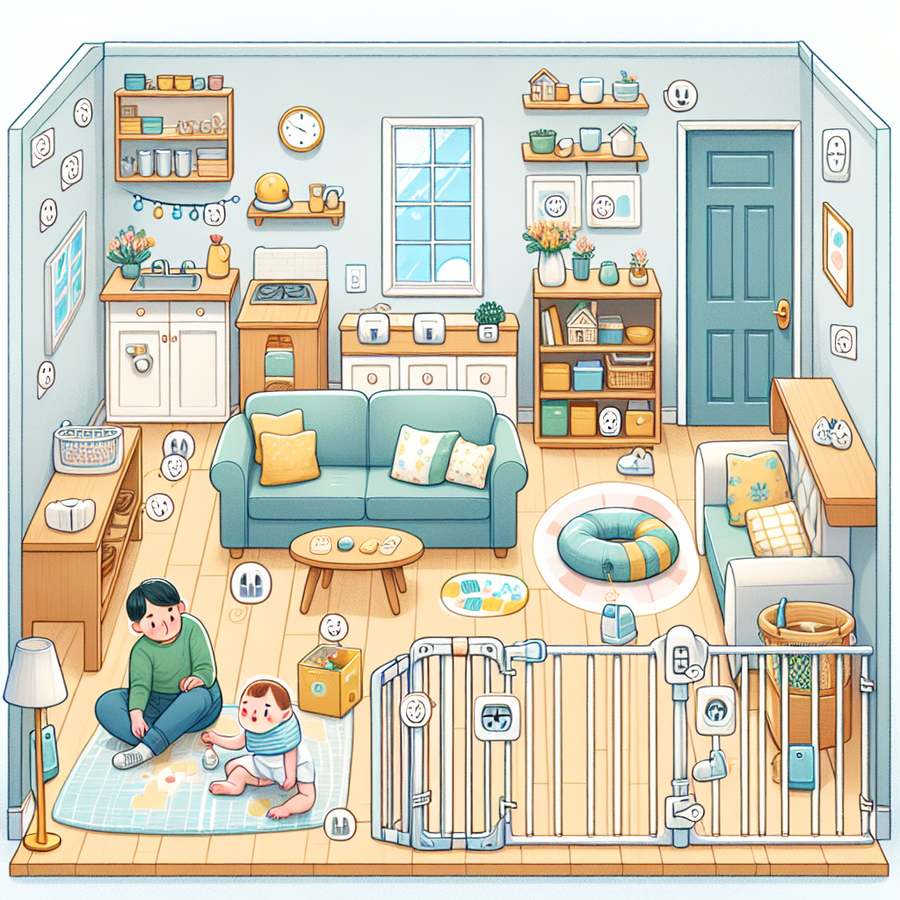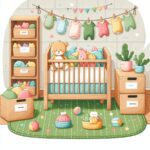Baby proofing your home for a crawling infant is a crucial step in ensuring the safety and well-being of your little explorer. As they begin to move around on their own, babies are naturally curious about their environment, which can lead them into potentially dangerous situations. This comprehensive guide will provide you with all the information you need to create a safe space for your infant to learn and grow.
Understanding the Importance of Baby Proofing
Baby proofing your home is not just about putting up barriers and locking away hazardous items; it’s about creating an environment where your infant can safely explore and develop. From the moment babies start crawling, they are at risk of accidents and injuries that can easily be prevented with proper precautions.
According to the Centers for Disease Control and Prevention (CDC), falls are the leading cause of non-fatal injuries in children aged 0-19 years. This statistic underscores the importance of baby proofing areas like stairs, sharp corners, and furniture that can tip over. Taking these preventative measures can significantly reduce the risk of accidents in your home.
Baby Proofing Your Home for a Crawling Infant
Baby proofing your home for a crawling infant involves a thorough assessment of your living space to identify potential hazards. This process includes securing heavy furniture to the wall, covering electrical outlets, and installing safety gates to prevent access to dangerous areas.
Another essential aspect of baby proofing is ensuring that all small objects, which could pose a choking hazard, are out of reach. Additionally, using corner protectors can help prevent injuries from sharp edges on furniture. For more detailed information on common household hazards and how to childproof against them, visit Common Household Hazards for Babies and How to Childproof.
Advanced Baby Proofing Tips
While covering the basics of baby proofing is essential, there are also advanced strategies that can further enhance the safety of your home. These include securing your home’s Wi-Fi network to protect against potential cyber threats and using non-toxic cleaning products to ensure a safe environment for your infant.
It’s also important to consider outdoor safety measures, such as securing the perimeter of pools and ensuring that your garden plants are non-toxic. For information on selecting non-toxic cleaning products, check out Selecting Non-Toxic Cleaning Products in Homes with Babies.
In conclusion, baby proofing your home for a crawling infant is a vital step in ensuring their safety as they explore their surroundings. By understanding the importance of baby proofing, taking the necessary precautions, and implementing advanced safety measures, you can create a secure environment for your little one. Remember, a safe exploration space is crucial for your infant’s development, so take the time to properly baby proof your home.
For more tips on creating a safe environment for your infant, consider exploring resources such as Safe Sleep Practices to Reduce the Risk of SIDS and First Aid Kit Essentials for New Parents.













